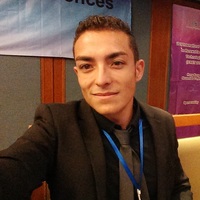- Building Energy Simulation, Daylighting, Architectural Design, Daylight Factor simulation methods, Daylight, Modélisation, Green Architecture and Environmental Design, and 12 moreThermal comfort, Daylighting, Sustainable Design, Double Skin Facades, Building Hydrology, Dehumidification, Historic Preservation, Renewable Energy, Energy Efficiency Buildings, Dynamic Thermal Simulation of Buildings, Energy efficiency, and Building Integrated Renewable Energyedit
- Ph.D. in Physics applied to Building.
My research topics are related to lighting (artificial and natural), thermal and visual comfort, innovative devices or insulation, applied to the building.edit
The work presented in this paper aims to compare two different climates in Australia and Reunion Island and to identify the similarities in terms of bioclimatic design of low energy building. This approach is to perform a real evaluation... more
The work presented in this paper aims to compare two different climates in Australia and Reunion Island and to identify the similarities in terms of bioclimatic design of low energy building. This approach is to perform a real evaluation of the sensation of thermal comfort in the workplace for different climates on the basis of the "bioclimatic chart" developed by Baruch Givoni.
This article discusses the comparison of the thermal comfort levels obtained in the same building located in Australia and Reunion Island for different climatic zones.
Both countries are influenced by the ocean and the altitude but are located at very different latitudes. Australia is a large area with several types of climate: temperate in south-eastern and south-west, desert or semi-arid in most parts of the territory, and tropical climate in the northern zone of the continent. Reunion has a tropical climate that can be affected by the altitude.
Bioclimatic design strategies are different for wet and dry tropical climates, but in terms of targets at low energy, some basic principles can be identical and can be applied around the world.
If a building is well designed and well adapted to its local climate, it is possible to apply the same design rules and standards for all buildings and two for these two different climates.
This article discusses the comparison of the thermal comfort levels obtained in the same building located in Australia and Reunion Island for different climatic zones.
Both countries are influenced by the ocean and the altitude but are located at very different latitudes. Australia is a large area with several types of climate: temperate in south-eastern and south-west, desert or semi-arid in most parts of the territory, and tropical climate in the northern zone of the continent. Reunion has a tropical climate that can be affected by the altitude.
Bioclimatic design strategies are different for wet and dry tropical climates, but in terms of targets at low energy, some basic principles can be identical and can be applied around the world.
If a building is well designed and well adapted to its local climate, it is possible to apply the same design rules and standards for all buildings and two for these two different climates.
This article discusses the comparison of the thermal comfort levels obtained in the same building located in Australia and Reunion Island for different climatic zones.
Both countries are influenced by the ocean and the altitude but are located at very different latitudes. Australia is a large area with several types of climate: temperate in south-eastern and south-west, desert or semi-arid in most parts of the territory, and tropical climate in the northern zone of the continent. Reunion has a tropical climate that can be affected by the altitude.
Bioclimatic design strategies are different for wet and dry tropical climates, but in terms of targets at low energy, some basic principles can be identical and can be applied around the world.
If a building is well designed and well adapted to its local climate, it is possible to apply the same design rules and standards for all buildings and two for these two different climates.
This article discusses the comparison of the thermal comfort levels obtained in the same building located in Australia and Reunion Island for different climatic zones.
Both countries are influenced by the ocean and the altitude but are located at very different latitudes. Australia is a large area with several types of climate: temperate in south-eastern and south-west, desert or semi-arid in most parts of the territory, and tropical climate in the northern zone of the continent. Reunion has a tropical climate that can be affected by the altitude.
Bioclimatic design strategies are different for wet and dry tropical climates, but in terms of targets at low energy, some basic principles can be identical and can be applied around the world.
If a building is well designed and well adapted to its local climate, it is possible to apply the same design rules and standards for all buildings and two for these two different climates.
